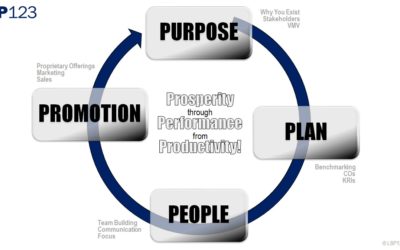“One-to-Ones Could Be Your Most Productive Activity as a Leader”
by Rob Marchalonis.
The benefits of one-to-one meetings with employees are numerous, but many leaders aren’t sure how to begin or the best way to structure these engagements. As a result, they can be hesitant to start or continue one-to-ones, or proceed with an unproductive agenda. Use the guide below to launch and help you make better use of everyone’s time and effort.
Consider Your Objectives, Agenda, and Schedule.
Before you meet one-to-one, commit to a deliberate approach and positive frame of mind. Consider these primary objectives:
- Respect – sharing quality time is a simple yet effective way for you to acknowledge and honor another person.
- Relationship – build personal and organizational trust as you invest in understanding and connecting with others.
- Communication – realize that your “conversations” are likely the essence of your relationship with co-workers.
- Clarity – understanding what others know, believe, expect, and question will increase your “leadership equity”.
- Results – better one-to-ones will help you achieve critical outcomes faster and more cooperatively.
Establish a clear agenda, so that meetings are most productive. Consider the outline and questions below to guide one-to-ones toward better results:
- Check-In – get an update on each other’s state-of-mind with a question like “How is your week going?”
- Critical Outcomes – ensure clarity about the top 2 – 4 objectives you each want to achieve in the next 6 – 18 months.
- Performance Results – get updates on results and goals for the top 4 – 6 measures of performance.
- Issues & Opportunities – list and prioritize what’s most important to focus on in the next few days and weeks.
- Challenges & Solutions – list and prioritize the obstacles inhibiting results, and possible solutions.
- Prioritized Actions – list and prioritize required work or activities that will “take more than 4 hours” to complete.
- Schedule Updates – summarize where you will be, between now and your next meeting.
Schedule regular one-to-one meeting dates and times, with an emphasis on shorter but more frequent meetings to start. Productive meetings need not be long to be effective. The efficient use of everyone’s time is critical.
- Start-Up (first 5 – 10 meetings) – meet for just 15 – 20 minutes, twice a week.
- For the first meeting or two, mostly ask questions and listen to seek understanding.
- Look to establish a relationship, trust, and a productive format for your discussions.
- Transition (after start-up, for 3 – 6 months) – meet for 30 – 60 minutes, weekly.
- After start-up, conversations will become more comfortable, relevant, and productive.
- Maintain a consistent meeting schedule and be sure to re-schedule any calendar conflicts.
- Ongoing (when employee productivity has stabilized) – schedule weekly to bi-weekly.
- Sustain your relational investment and refine the ways you support each other.
- Accept that some meetings will have to be skipped or changed, based on schedules.
Leaders, enjoy much better employee relationships and performance when you launch (or improve) one-to-one meetings with a simple consideration of your objectives, agenda, and schedule.
Note: When your one-to-ones are not resulting in the improvements or productive outcomes you desire, it may be caused by “misunderstanding”. Learn ways to get over this hurdle (HERE) in my blog post “Help Me Understand”.
Rob Marchalonis (Rob@LSP123.com) shares knowledge and experience with leaders to increase their organizational productivity. Email, or message Rob on LinkedIn. Learn more at www.LSP123.com and www.IncentShare.com
(Click HERE) to see results Rob has helped clients achieve.
More Business Advice
Business owners, employers, and leaders can sharpen their skills with the content below.
Stuck in the Middle
Tips for Leaders to Facilitate Conflict Resolution by Rob Marchalonis. Ever find yourself in the middle, between employees or associates who disagree or have conflict? Like good parents and counselors, leaders can play an important role in facilitating communication,...
Sleepless Nights
How I Settle My Mind to Get Needed Rest by Rob Marchalonis. I confess, some of my most difficult times as a leader have been in the middle of the night. Can you relate? As a younger leader, I would often lay awake in bed for minutes (or hours) during the quiet...
Consider an Advisory Board
Gain Priceless Wisdom and Experience by Rob Marchalonis If your business could tap into the most successful, experienced, and smartest leaders in your community or industry, how might it benefit? By creating an “advisory board”, you can gain access to wisdom and...
Leading Through Crisis
12 Steps to Guide Your Response by Rob Marchalonis. If you are a leader, it’s almost certain you will eventually have to lead through a crisis. The types of crises can vary, but consider those caused by natural disasters, economic circumstances, health concerns,...
Game Play Mimics Business
A Fun Way to Multiply Your Results by Rob Marchalonis. Have you played a new app or board game lately? How did it go? Did you feel somewhat confused as you learned the rules and how to “play” the game? Business leaders can learn a lot from gameplay, especially by...
Good People, Bad Decisions
Ways to Understand and Guide Better Decision Making by Rob Marchalonis My education, experience, and faith have taught me that every person has amazing potential for “good”. In general, I think positively about others and believe that most are well-intended. Would you...
Productivity Plan Overview
When I work with business owners and leaders to improve organizational performance, there are almost always opportunities to improve workgroup productivity and results. Among the many ways to accomplish this, one simple approach is to start with the four "P”s: Purpose...
Test Your Next Policy Change, Before Rollout
Have a Big Idea to Launch? By Rob Marchalonis. Before you implement a significant change that will affect your employees, consider starting with a “test” rather than a final decision. If you plan to mess with a person’s “time, treasure, or trust” be very careful,...
Idea, Hobby, or Business?
Questions to Evolve a Great Idea into a Legacy Business. by Rob Marchalonis What’s the Goal for Your Big Idea? Clients, friends, family, and others regularly share their business ideas with me. Usually, the ideas are exchanged in casual conversation to get a first...
Better Workgroup Productivity – Here’s How
Want More Productive Workgroups? Business leaders, which of your workgroups would you like to be more productive? Think about your senior leaders, sales, operations, manufacturing, service, or support teams. Is there one group in particular that, if you could just...











